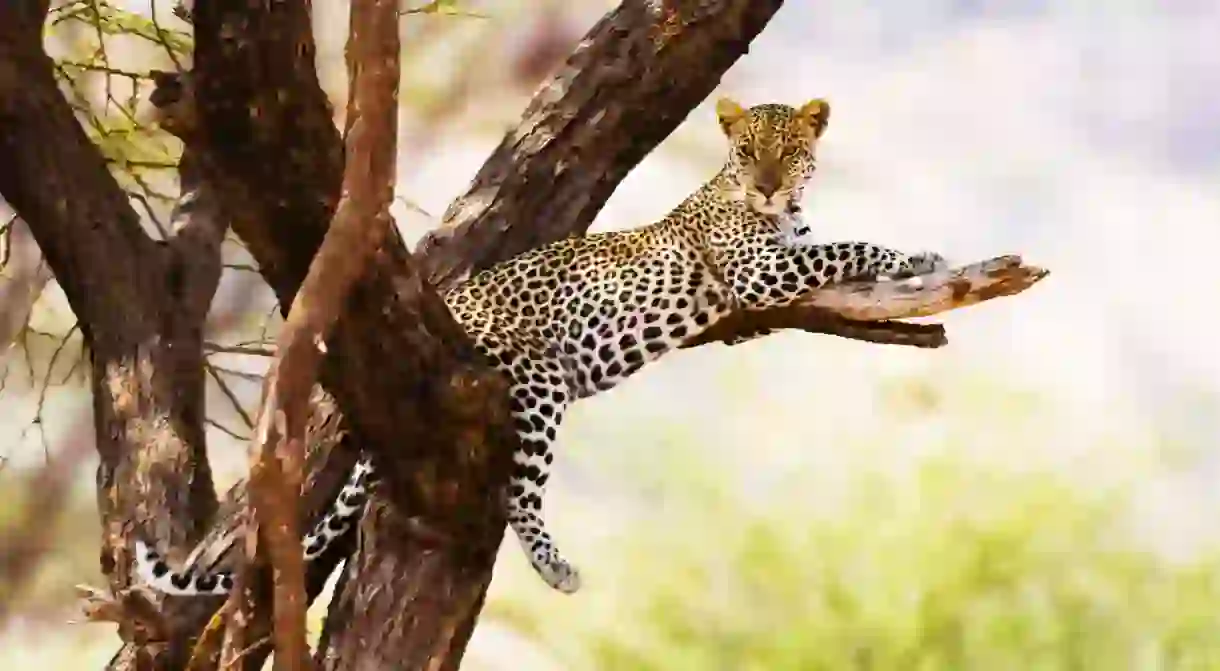The Best Safaris in Kenya You Have to Go on

To many, the ultimate safari trip is all about checking off the Big Five and other popular wildlife. Yet a safari in Kenya is all about the experience – to go out deep into the wild and observe the animals in their natural habitat. The best time of year to go on safari in Kenya is during the dry season, which runs from late June to October – but where exactly is best to go? Here, we take a look at the best safaris in Kenya.
Dreaming of a Kenyan safari? Book yourself onto Culture Trip’s seven-day Kenyan adventure, where you’ll venture into national parks on game drives, visit an extinct volcano and stay at one of the best safari lodges in Kenya, the Ark. We’ll handle all the details for you.
Aberdare National Park
Natural Feature, Park

Located near Mount Kenya, Aberdare can get relatively cold and is often plagued by an early morning mist that nonetheless dissipates as the sun rises. It has two contrasting habitats; the Kinangop Plateau, which is comprised of moorland, and the Salient, which is all dense, lush rainforest dotted with waterfalls. Due to its high altitude, Aberdare provides some of the best panoramic views, hiking and wildlife experiences in Kenya. But you do have to be on high alert here as the thick vegetation forms a good hideout for animals. Elephants, leopards, hyenas, buffaloes, black rhino and even the rare black leopard are some of the wildlife you might encounter here.
Samburu National Reserve
Park, Natural Feature
Samburu National Reserve, on the other hand, is dry most of the year. Encompassing three adjacent parks – Samburu, Buffalo Springs and Shaba, all served by the Ewaso Nyiro river – the hilly landscape here is accentuated by humongous termite mounds. The vegetation varies from shrubs and dry grassland to distinctive doum palm trees. As this spot lies on the Equator, animals native to both sides of the line can be found in the same place. They include Grevy’s zebras, gerenuks, reticulated giraffes, blue-legged Somali ostriches and beisa oryxes.
Amboseli National Park
Park

Maasai Mara National Reserve
Park

Shimba Hills National Reserve
Natural Feature, Park

This small nature reserve has just as much to offer as its larger counterparts – if not more – and is low-key one of the best safari parks in Kenya. Located in the southern coastal region and frequented by tourists staying in Diani Beach, it hosts a variety of beasts including elephants, buffaloes, sable antelopes, Masai giraffes, warthogs, baboons and some 300 butterfly species.
Meru National Park
Natural Feature, Park
This is perhaps the least-known national park in Kenya but Meru still has a lot to offer. The landscape is stunning, with dry grassland contrasting the rolling hills and riverine forests found along the several streams. Indigenous baobab trees stand side by side with doum palms. The array of wildlife includes lions, cheetahs, elephants, rhinos and Grévy’s zebra among others.
Lake Nakuru National Park
Park

Nairobi National Park
Natural Feature, Park

Tsavo West National Park
Park, Natural Feature
This is the epitome of wilderness. With rocky hills, natural springs, swamps, dormant volcanoes and even a bed of igneous rock, Tsavo West is a stellar option home to a dramatic vista. Hippos and crocodiles dominate the springs while gazelles, impalas, lesser kudus, rhinos, zebras, oryx, giraffes and elephants opt for the numerous waterholes. Where there is prey, predators are not far behind. Lions, cheetahs, leopards and hyenas lie in wait by the water.













